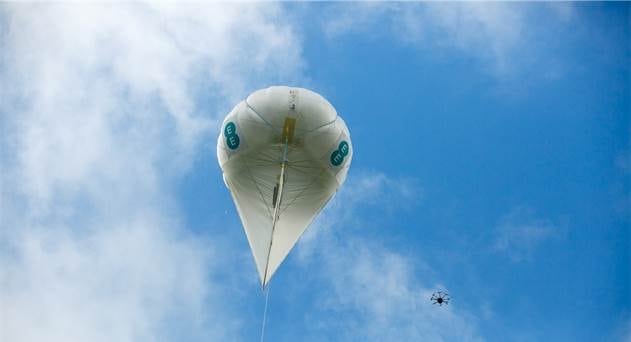EE, the largest mobile operator in the UK is preparing to launch balloon and drone ‘air masts’ as part of its effort to improve coverage in rural areas of the country. EE expects to deliver a deployed balloon solution in a rural environment in 2017.
Recently, the Operator showcased how it can use mini mobile sites attached to a helium balloon – a ‘Helikite’ – to provide wide area 4G mobile coverage where permanent sites have been damaged or in areas where there is no 4G coverage. EE also showcased the use of drones equipped with mini sites, each including a basestation and antenna, that could be used to provide targeted coverage, including in search and rescue operations.
The unique solutions demonstrate the use of small cells connected back into the EE network over satellite or using EE’s 4G spectrum to be able to make calls and access the internet from even the most remote areas. EE’s tethered and powered mobile ‘air mast’ solutions are currently in patent-pending status.
EE’s innovative aerial solutions have been supported by a number of solution vendors, including Nokia which provided it portable Flexi Zone small cell basestation solutions; Parallel Wireless which has delivered a unique technology with self-configuring and self-optimising basestation, in-band backhaul capability, and network meshing techniques; Avanti which has enabled a fast, reliable satellite backhaul connection; and VoltServer which has provided touch-safe and flexible Digital Electricity power over data cable/tether.
Marc Allera, CEO, EE
We are going to extraordinary lengths to connect communities across the UK. Innovation is essential for us to go further than we’ve ever gone, and deliver a network that’s more reliable than ever before. Rural parts of the UK provide more challenges to mobile coverage than anywhere else, so we have to work harder there – developing these technologies will ultimately help our customers, even in the most hard to reach areas. Looking ahead, I see innovations like this revolutionising the way people connect.




















